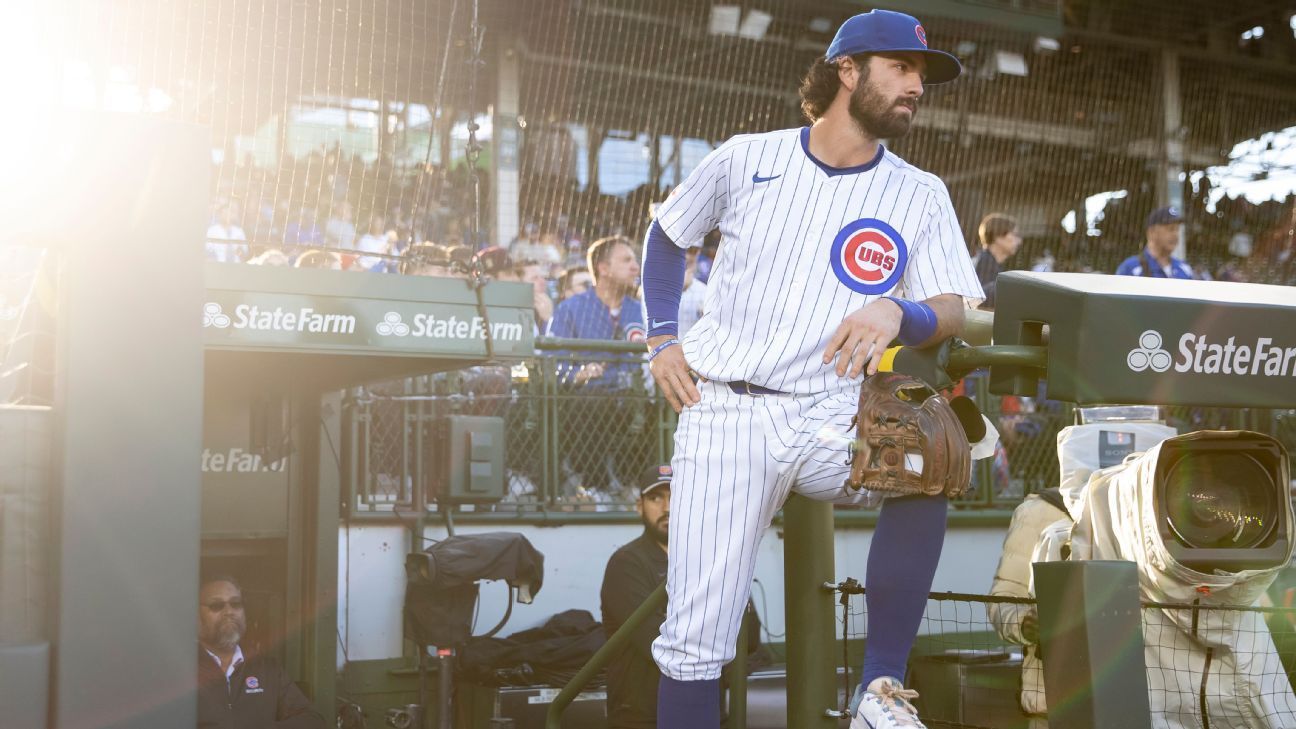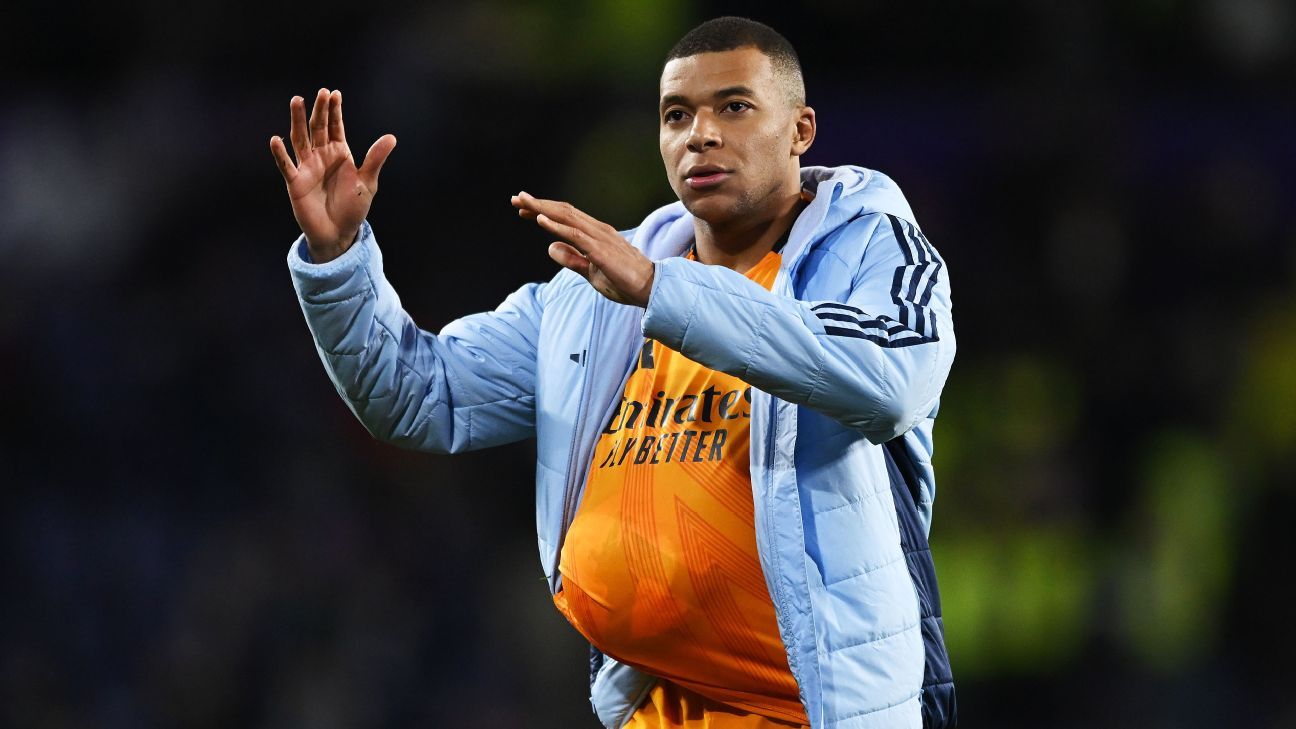FOR DECADESThe story of a Major League game has been told through the familiar numbers of a scoreboard: runs, hits, errors, home runs, strikeouts.
But now, there's another graph your favorite team looks at after games, one few outside the sport's inner circle have seen, consisting of color-coded grid-like documents that measure the workload of each player who came out. to the field that day.
Baseball may not be the first sport that comes to mind when you hear the term “load management,” but MLB teams are becoming obsessed with it. In baseball, the discussion revolves around keeping position players on the field and performing at their best.
Teams monitor everything players do, starting with the obvious: how much distance they've covered on a given night, both on the bases and defensively in the field. Tracking also takes into account the small details that come into the equation: How many times did a player take off from first base in a full count? How often did he dive for a ball in the infield? Every bit of information helps teams anticipate potential health issues or drops in production.
“I've taken a lot of interest in my second coaching career,” Cincinnati Reds captain David Bell said. “As a player, you think you're invincible and can play every day. But the hard work of a baseball season is extremely challenging. Over time, it gets worse.
“The routine is harder. The game is harder.”
At a time when analysis has become a standard element in almost all front office decisions, optimizing player workload is seen as one of the few remaining areas where teams can gain an advantage. . Now that technology has emerged that allows clubs to measure movement like never before, the race is on to find the best information and how to communicate it to players.
“There are other sports that are miles ahead of us,” Milwaukee Brewers general manager Matt Arnold said. “Football and NBA teams have been following this type of thing for years. We have room to grow in our industry.”
As clubs learn every day, ESPN asked MLB executives, managers and players what the growing interest in load management means for their sport and how their teams are using the data.
THERE IS NO another sport that requires its athletes to take the field as often as professional baseball does. Sure, MLB players aren't tasked with running constantly, but each movement adds up and leads to cumulative fatigue throughout the season.
“You can go 10 games without accelerating, but you can throw a lot from the outfield,” Chicago Cubs general manager Carter Hawkins said.
Enter the grids, which track each of those moves cumulatively. The San Diego Padres, for example, track their players' workloads in 30-day increments, using color-coded sheets for high-effort runs, maximum sprint speed and demanding defensive moves. Some teams believe their information is private and keep it secret. Everyone has a different perspective on how they track cargo management.
“We have a report that comes out every morning that includes what's pertinent from the last game,” said Justin Hollander, executive vice president and general manager of baseball operations for the Seattle Mariners. “It's kind of a running total of where guys might be, based on workload over a longer period of time.”
ESPN was granted permission to look at several teams' load management grids, and while the tracking tools look different at each front office, there's a common theme in many of the prints: the darker the color, the more the player has moved, often over a gradient from white to dark red.
Unsurprisingly, baseball's biggest stars tend to have their names in the darkest shades, as they are in the lineup every day and, with a few exceptions, run the bases more than the average player.
“He lives in the red zone,” Houston Astros manager Joe Espada said of two-time All-Star third baseman Alex Bregman.
Once a team has identified a player entering that danger range, the process moves from spreadsheets to action plans. The challenge in adjusting pre- and post-game work is that fatigue is a moving target. Is the team in a stretch of the agenda without days off? Did you play extra innings recently? And what has the player actually been doing on the field?
“We have a more evidence-based way to measure where fatigue actually is,” Hollander said. “I think a lot of teams build that into the routines, the work you do before the game, the work you do after the game and, of course, the days off.”
Each manager faces a different challenge. Following the team's deal with him for Luis Arráez, Padres manager Mike Shildt must rotate a large group of infielders between their regular and designated hitter positions. In the case of the Astros, Espada is particularly aware of the added workload in recent years thanks to the team's postseason success. As one rival executive put it: “The whole team lives in the red zone.”
“I take into consideration that our players have played the most games of any team in the last six or seven years,” Espada said. “When guys start trending in the red zone, we try to make sure we control the volume of their pregame work or give them a designated hitter day or a day off. But we try to do it before they get into the red zone. “.
MAIN OFFICES TOO Face the reality that not all players love the idea of being told to sit down because a heat map says it might be time. Many of them have it ingrained to play every day no matter how their bodies feel, and some simply prefer to play through fatigue rather than listen to what the tracking technology is telling them.
Cubs shortstop Dansby Swanson had that mentality and played in all but two regular season games from 2020 to 2022. Now, however, a drop in late-season production late last year and a Slow start to this season makes him think differently. .
“I don't like to change what works for me, but I had to do it this year so I can be the best player I can be,” said Swanson, who turned 30 during the offseason. “We all sat down and collaborated on a new [pregame/postgame] plan that would work for me like just two weeks ago.
“It's a different way of putting coins in the piggy bank.”
Other stars still prefer the heavier workload, fearing that sitting down even during a game will hurt their production more than rest would help.
“I feel like I play better when I'm in the red,” Bregman said. “I feel like I go to the stadium to play every day and I want to play in more than 162 postseasons every year.”
This is where front offices and coaching staff have learned to collaborate with players, finding ways to lighten their load behind the scenes while still allowing them to appear in games. The coach is usually the intermediary between the medical team, strength coaches, and players.
In the case of the Astros, Bregman works with Espada to control the pregame volume. Padres infielder Xander Bogaerts does the same with Shildt, starting by eliminating batting practice and then, if necessary, reducing weight lifting.
In his first year as San Diego's coach after spending last year as the team's bench coach, Shildt learned that telling a player he needs to take a game off is not the best approach. Instead, he will suggest a designated hitter day or a modified pre- and post-game plan.
“If that collaboration doesn't happen and we don't combine those things properly, there's going to be a much higher risk of injury or poor performance,” Shildt said. “From where I sit, it's all about the daily schedule. We monitor the efficiency of the pregame work. I think that's the best word to use. How efficient are we with our work beyond the game?”
As the concept of load management spreads across baseball, the sheets that tell the story of a player's status may look a little different in each front office. But the goal for all teams is the same: get ahead of fatigue so players can perform at their best, rather than learning too late that they could use a day off after suffering an injury or a prolonged slump.
“It's not about trying to limit anyone,” Arnold said. “It's about keeping them on the field as much as possible.”












